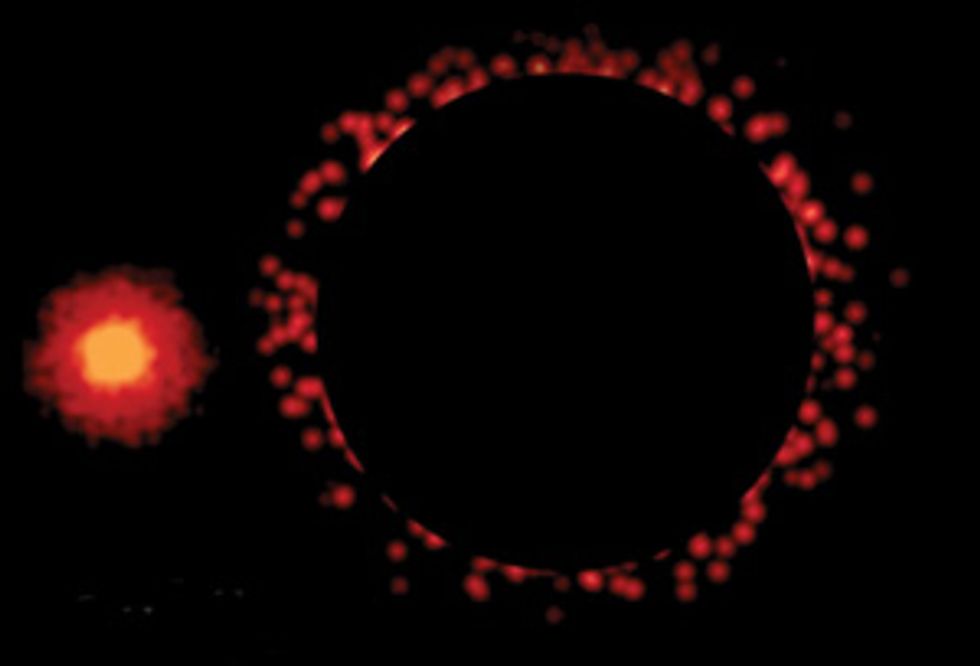How Space Telescopes Will Find Earth 2.0
The galaxy is full of exoplanets. Now we’ll find out what they’re made of

Earlier this year, astronomers announced the discovery of a planet not much bigger than Earth. Dubbed Kepler-452b, the planet orbits a star like our own sun. Even more exciting, it orbits its star at just about the same distance that Earth orbits the sun, with a year that lasts just 20 days longer than our own. For the first time, astronomers had found a world that could be called—if not an Earth twin—at least a close cousin.
But what do we know about this world? Like most of the exoplanets found to date, Kepler-452b remains a mystery. It’s not clear, for example, whether it boasts a rocky surface like Earth’s and, if it does, whether it has oceans or a breathable atmosphere.
Today, our exoplanet catalogs are filled with many hundreds of entries but only the most basic of details: fundamental features, such as mass or radius—or in certain cases, both—and a few numbers pertaining to each planet’s orbit. There is little to tell us what these planets are made of, what their climates are like, and whether they could support life.
But this state of affairs is beginning to change. More than 20 years after the first exoplanets were found, the focus is shifting to planetary characterization. Astronomers are studying the spectra of exoplanet atmospheres, filling in our picture of these distant worlds. This burgeoning field will get a big boost with NASA’s James Webb Space Telescope. Slated to launch in 2018, JWST will be able to scrutinize the atmospheres of exoplanets that can’t currently be studied. With any luck, it will give us our first detailed look at other worlds that might be capable of supporting life.
Twenty-five years ago, we knew of only one solar system in the Milky Way—our own. We now know of well over 1,000 stars that harbor one or more planets.
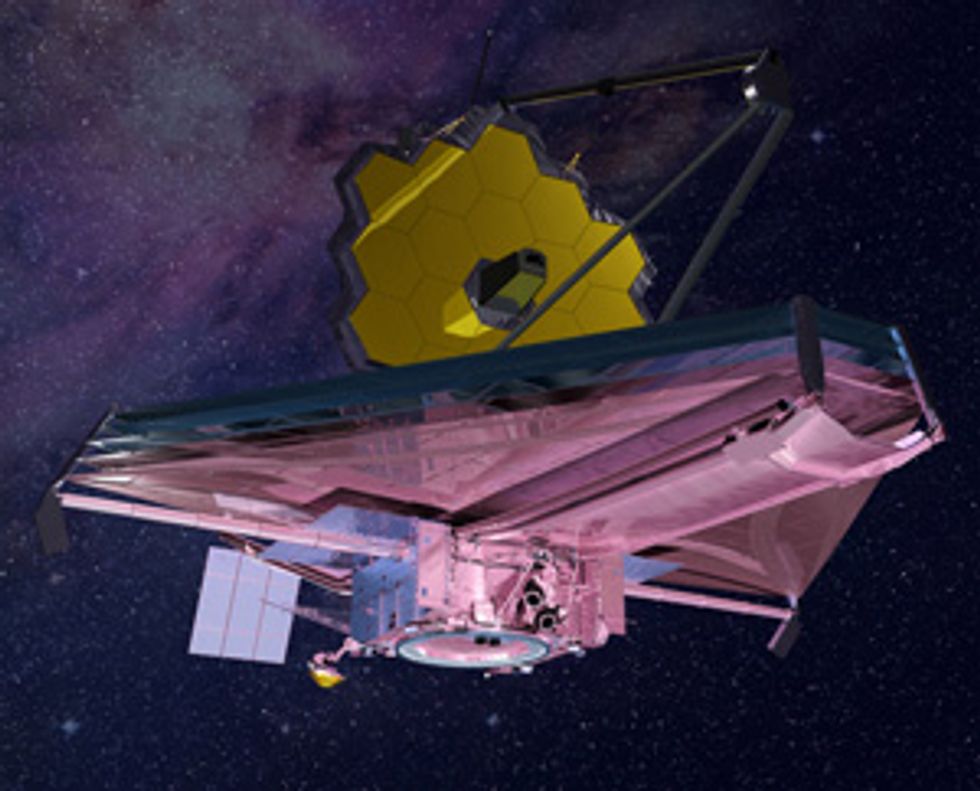
Some of the first exoplanets were discovered by looking at the spectral lines of stars—specifically at the shift in wavelength that occurs when the gravitational pull of a planet makes its star wobble back and forth with respect to Earth. Today, the majority of known exoplanets have been discovered by looking for transits. A transit occurs when a planet passes across the face of its star, creating a small dip in the amount of starlight that reaches our telescopes.
The European COROT telescope, launched in 2006, was the first telescope dedicated to hunting for exoplanet transits from space, where you don’t have to contend with the fluctuations in light levels caused by Earth’s atmosphere. Less than three years later, NASA launched the survey telescope Kepler. By staring for years at the same patch of sky, Kepler has identified more than 4,600 possible planets. Of those, more than 1,000 have been confirmed by ground-based observations.
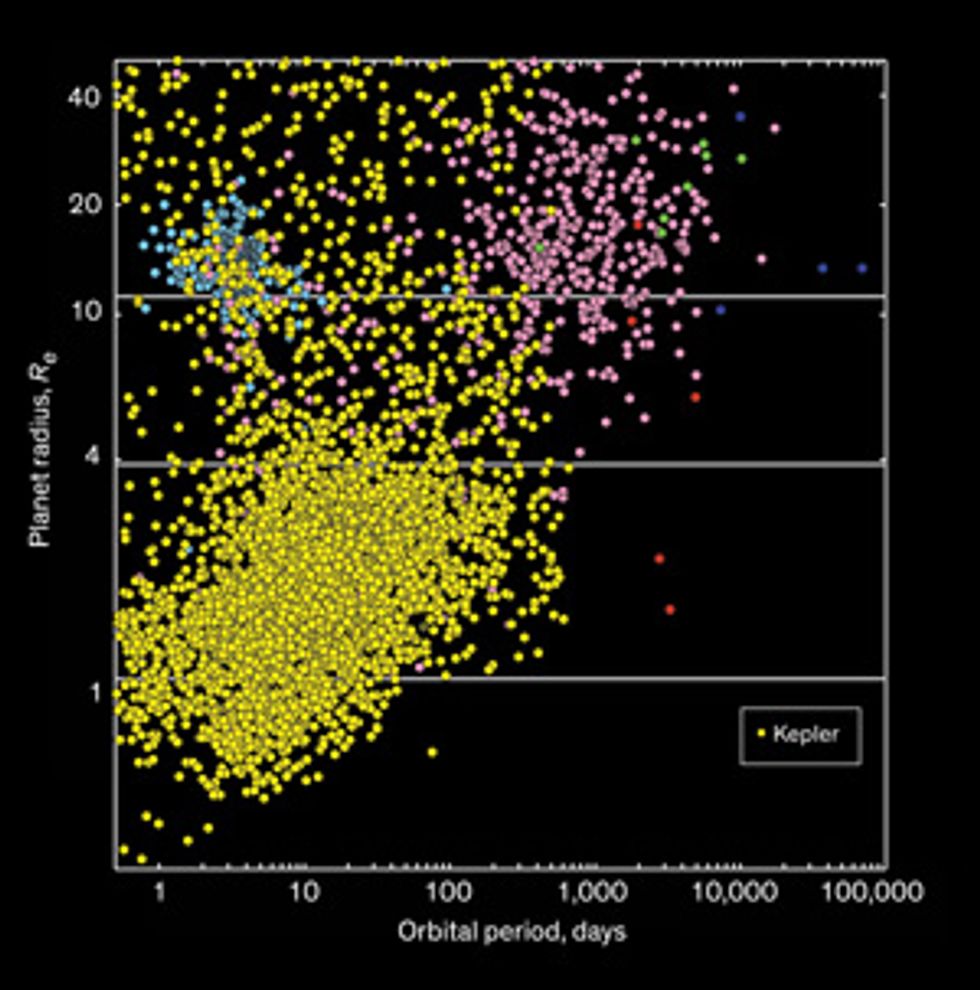
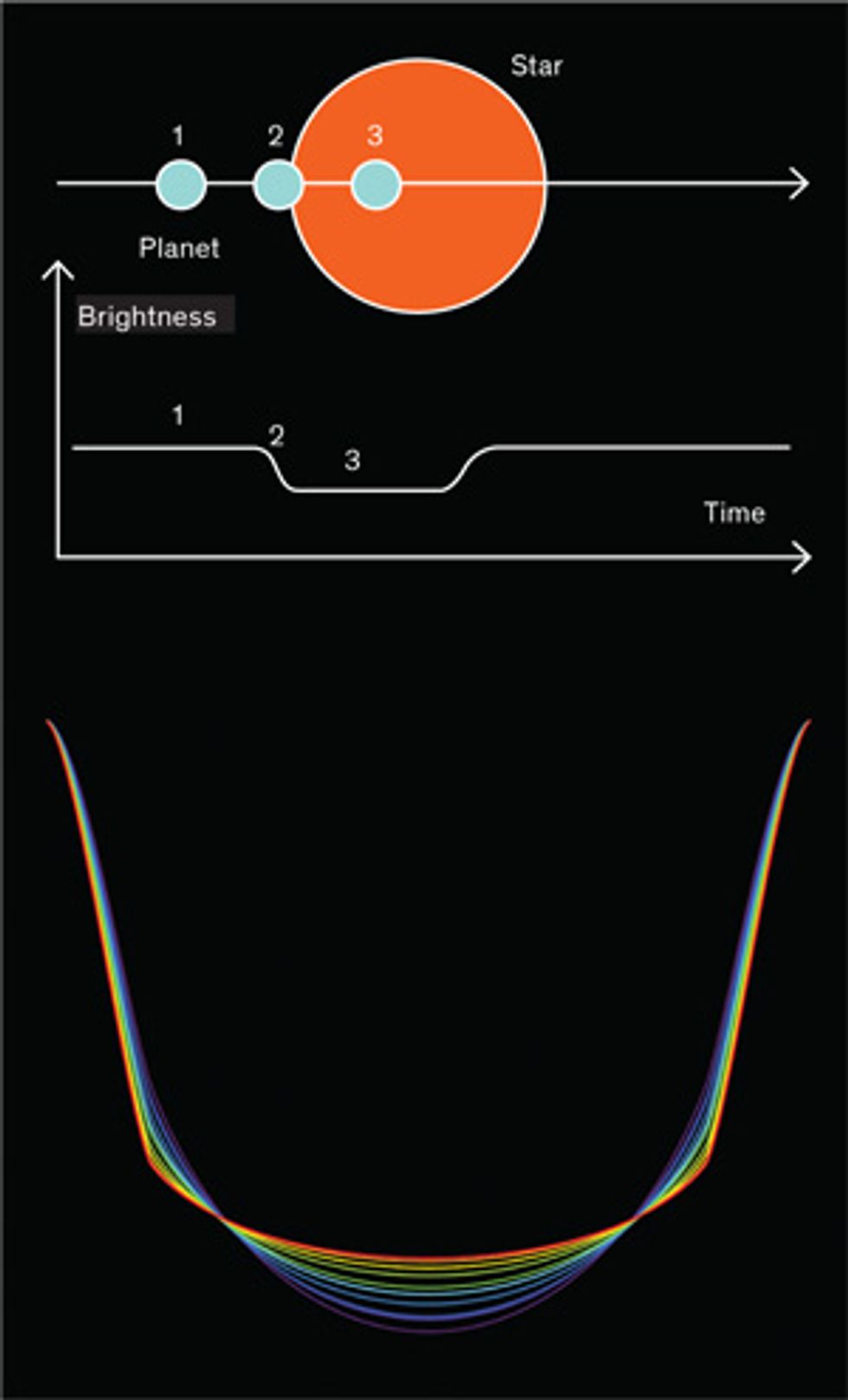
The planetary systems Kepler discovered are quite diverse. Many are like ours, with multiple planets orbiting one star. Other systems are far more exotic, with planets that orbit two stars that also orbit one another.
Among the most significant results from Kepler is the abundance of smaller exoplanets. By extrapolating from Kepler’s discoveries, astronomers now think there are billions of worlds about the size of Earth in the Milky Way. A good fraction of exoplanets are larger than Earth but smaller than Neptune. Those on the smaller end of the spectrum may have developed a rocky surface and an atmosphere like Earth instead of becoming an ice giant with a thick atmosphere and high surface pressure like Neptune.
If a smaller exoplanet orbits a star at the right distance—not too close and not too far—it could have temperatures in the right range for liquid water to exist on the surface. The location of this “habitable zone” varies with the type of star. The numbers are still quite uncertain, but Kepler’s survey suggests that as many as about 20 percent of the G-type stars in the galaxy—a class of stars that includes our own sun—have roughly Earth-size planets in their habitable zones, for a total of a billion or so worlds. Small, temperate planets also seem to be quite common around smaller, cooler M-type stars, also called red dwarfs.
How do we find out what these worlds are like? The transit of a planet can yield important, basic information. The amount of light the transit blocks out, for example, gives the planet’s diameter: The bigger the planet, the more light it will block. And the time interval between transits will yield the planet’s orbital period.
But if we want to learn more, we need to pick apart the planet’s light. Studying a planet’s spectrum can reveal what its atmosphere is made of and how thick and hot it is. Studying the molecules present in the atmosphere could give insight into the environment in which the planet formed—and also whether the planet might prove hospitable to life.

Fortunately, transits give us a relatively straightforward way of studying planetary spectra. When an exoplanet passes between its host star and Earth, astronomers can measure the starlight being absorbed by the planet’s atmosphere. By comparing the star’s spectrum during a transit with its spectrum when the planet is not in front of it, scientists can deduce what elements are present in the planet’s atmosphere. A similar exercise can be performed to look at thermal signals from the planet’s atmosphere, radiated as infrared light. These signals can be separated from starlight because they will disappear while the planet passes behind its host star.
The first such atmospheric studies were done in the early 2000s, when astronomers used a spectrograph aboard the Hubble Space Telescope to measure the levels of sodium in the atmosphere of the exoplanet HD 209458b, a giant planet that sits about 150 light-years from Earth. Since then, Hubble and NASA’s Spitzer Space Telescope, along with ground-based detectors, have helped add to the spectroscopic menagerie. Hubble data on GJ1214b, for instance, suggest that it might be a cloudy planet or have a thick haze of molecules made through interaction with sunlight. Last year, Hubble observations of WASP-43b were used to construct a detailed temperature profile of that planet’s atmosphere, which is hot enough to melt iron on its star-facing side. Spitzer observations of 55 Cancri e, which orbits its host star so closely that its year lasts only 18 Earth hours, suggest the planet is quite dark in appearance.
These and other observations have started to give us deeper insight into what exoplanets are actually like. But they’ve been limited to a small group of planets that meet the right set of observing conditions: The star must be bright enough and the planet big enough for its atmosphere to generate a strong signal. To learn about a wider set of planets—in particular, ones that are small enough to be rocky like Earth—we need a bigger telescope. We also need a new list of spectroscopic candidates; the transiting planets that Kepler finds typically orbit stars that are too distant and therefore too dim to create enough of a signal.
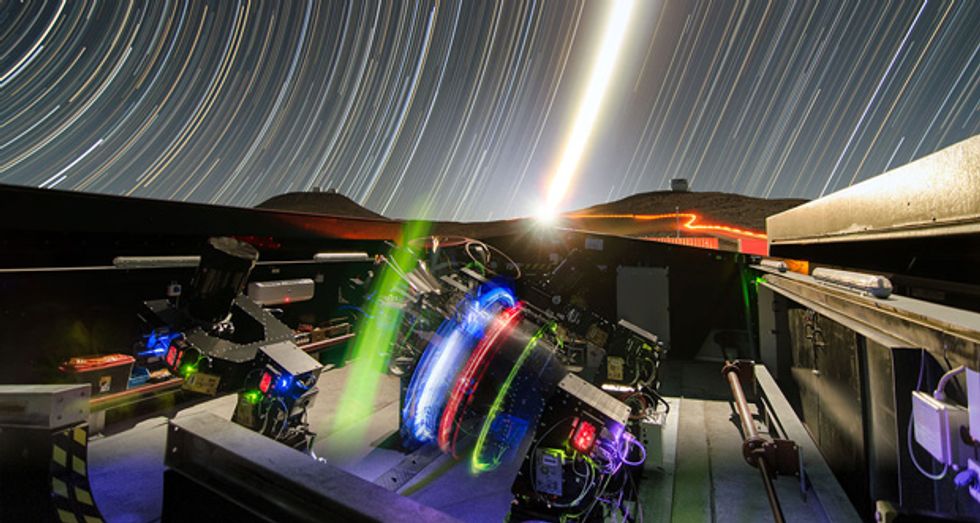
The process of identifying such candidates is already under way. One effort, a Chile-based array of telescopes called the Next-Generation Transit Survey, is focused on worlds around the size of Neptune and recently saw first light. And in 2017, NASA’s Transiting Exoplanet Survey Satellite (TESS) will launch. The spacecraft is designed to survey the whole sky and is expected to find a number of smaller exoplanets around bright stars located within about 200 light-years of Earth.
As TESS begins its work, our teams at Northrop Grumman in Redondo Beach, Calif., and at NASA Goddard Space Flight Center, in Greenbelt, Md., will be putting the final touches on the James Webb Space Telescope.
The telescope’s 6.5-meter-wide mirror will be the largest ever flown in space for astronomy, giving JWST about seven times the light-collecting area of Hubble. While Hubble is most sensitive to the optical and ultraviolet part of the electromagnetic spectrum, JWST will conduct the bulk of its observations in the infrared, which will afford it an unprecedented view of the birth and evolution of galaxies and the formation of stars.
The telescope wasn’t originally designed with exoplanets in mind. Even so, it will provide an impressive capacity to measure transit spectra. The near-infrared happens to be a region of the spectrum where water, oxygen, carbon dioxide, and a number of other interesting molecules have prominent spectral features.
In general it is quite tricky to find these spectral lines in transit spectra. The measurement involves detecting light from the very thin ring of a planet’s atmosphere against the bright backdrop of its star. You then have to subtract one very large number from another: starlight with planet from starlight with no planet.
It’s complicated in part because the signal becomes diluted as it’s divided up by wavelength, which you need to do to hunt for spectral signatures. So to boost the precision of these observations, you need to maximize the number of photons that are collected. The smaller the planet and the thinner its atmosphere, the bigger a telescope’s collecting area must be in order to gather a sufficient signal. At the same time, a telescope needs to be able to look at bright stars without saturating its detector. Some of JWST’s instruments do this with special optics, which spread out and so diffuse the starlight.
With its bigger collecting area, JWST’s observations of transiting exoplanets are expected to achieve a signal-to-noise ratio of 100,000 to 1, about five times as high as Hubble’s. That precision should allow the new telescope to discern the composition and thermal structure of giant-planet atmospheres with just one or two transits. It will also, for the first time, allow us to study the atmospheres of smaller exoplanets, including potentially habitable worlds; TESS should turn up at least a few rocky worlds, orbiting in the habitable zones of nearby stars, that JWST might examine.
Most of these candidates will be orbiting M stars. Finding and studying planets that orbit those smaller stars is generally easier because a planet will block out a larger fraction of the starlight, creating a deeper, clearer signal. M stars are also thousands of degrees cooler than our own sun, so the range of distances at which liquid water might exist lies much closer in. That makes transits by planets in the habitable zone of an M star much more frequent than those around sunlike stars. But it’s still unclear how habitable M-star planets might be. The closer-in planets are likely to be bombarded early on with high levels of stellar radiation that could strip away their water. And tidal tugs from the star could lock the planet’s rotation so that it always presents the same face to its star, as our moon does with Earth. JWST will give us a better sense of what such M-star planets are like.
Exploring rocky nearby worlds will be an evolving process. JWST will be able to measure the spectra of key atmospheric molecules, such as water, carbon dioxide, and methane, thereby giving us a clearer view of the atmospheres of those worlds.
Finding signs of life is another matter. What would constitute clear evidence? Water, for example, seems to be necessary for life as we know it, but the presence of water does not mean that there is life. Methane can be produced by microbes, but it can also be created by geological processes. High levels of oxygen might indicate the presence of plants, but it doesn’t have to.
The more planets we characterize, the better we’ll be able to understand the overall planetary population. Astronomers are already planning increasingly capable telescopes. Six years after JWST is sent to space, it will be joined in its orbit 1.5 million kilometers from Earth by PLATO, a European Space Agency spacecraft containing an array of 34 telescopes and cameras. PLATO is expected to find more transiting planets like Kepler-452b—Earth-size worlds that orbit in the habitable zone of sunlike stars.
But transiting planets represent just a small fraction of the planets in our galaxy—those that happen to orbit in such a way that they pass in front of their stars as seen from Earth. Many other worlds no doubt orbit their stars in ways that don’t produce strong transit signals; the most extreme example would be one with an orbital plane perpendicular to our line of sight with the star, so that to us its orbit resembles a bull’s-eye.


To widen the candidate pool and get a better, more direct look at each exoplanet, we’ll need to take pictures of them. A sufficiently sensitive telescope will let us discern changes in brightness as the planet rotates, which could be due to the presence of continents and oceans. It might also let us see a “red edge,” a spectral signature caused by plant life, which reflects strongly in the near infrared.
To date, direct imaging has been used to find only large, bright planets orbiting far from their host stars. Detecting the light reflected from Earth-size planets that orbit closer to their stars will be a challenge: Just one photon will be reflected for every 10 billion emitted by the planet’s sunlike host. To image such a planet, a telescope will have to be sensitive enough to detect this small signal—and have enough resolution to separate star from planet.
Today’s ground-based telescopes can easily resolve the angular separation between a small planet in the habitable zone and its star, but contrast is challenging. Internal devices called coronagraphs can block out starlight. But the turbulence in Earth’s atmosphere makes it hard to create a perfect shadow, one that would block out all of a star’s light but still let you see objects that are very close to it. Adaptive optics can help correct for that turbulence, but residual starlight will still overwhelm any light from small, close-in planets.
To see those planets, we’ll have to get above Earth’s atmosphere. A recent study, which extrapolates from our current knowledge of exoplanet populations, suggests we’d need a space telescope with a diameter of at least 12 meters in order to find and directly image about 30 Earth-size planets around sunlike stars.
Launching such a large telescope might seem daunting. But the lessons we’ve learned designing JWST could help us scale up. JWST’s primary mirror is a mosaic of 18 lightweight hexagonal segments that fold up so that the telescope fits inside its launch vehicle. A larger telescope would just have more segments.
A large mirror will give the telescope the requisite resolution and sensitivity. To discern the planet, it will need to block out the bright light of the star. One way to do this is with a coronagraph, as mentioned. An alternative approach is to use a starshade, a large starlight-blocking structure that would fly in formation with the telescope but be positioned tens of thousands of kilometers in front of it.
Astronomers and engineers are weighing these two options. In order for a coronagraph to block out the light from a close-in exoplanet’s star effectively, the telescope must be so stable that the position of an optical wave front drifts by no more than a few picometers—less than the size of a hydrogen atom—over the course of minutes. This level of stability is about 1,000 times that of JWST. Achieving it will require careful structural engineering as well as adaptive optics to counteract normal expansion and contraction due to the heat of the sun. Thanks to geometry, a distant starshade would need to stay aligned with the telescope to within only a matter of meters. Between observations, though, the starshade would have to be moved and realigned every time the telescope looked at a new star. Because of this, an internal coronagraph is likely to be the better option for an initial survey of a large number of stars.
Plans for a direct-imaging mission are still on the drawing board. Astronomers are talking about a 10-meter-class space telescope, one that might launch some time in the 2030s. Such a telescope could see changes as an exoplanet spins. In 2008, NASA’s Deep Impact spacecraft looked back at Earth to test this approach. The spacecraft’s camera could pick up variations in light reflected off land and water as the planet rotated.

But to truly image the surface of a distant world and identify what may be oceans and continents, we’ll likely need an array of more than a dozen space telescopes. As is often done with radio antennas, these would be connected to form an interferometer that would combine data to create a telescope that is effectively as big as the largest distance between the components.
Such an array is likely many decades away. But there is still ample reason to be excited. The field of exoplanet studies is now poised to answer some of the most compelling questions humankind has ever asked: Are we alone in the universe? Are there other worlds out there that are capable of supporting life? JWST will give the first glimpses into what rocky alien worlds are like. Future missions will seek signatures of life on these worlds. One day, we could find our planet’s true twin, ending the isolation that has held for billions of years, ever since life first appeared on Earth.
This article originally appeared in print as “The Hunt for Earth 2.0.”
About the Authors
Alberto Conti is an Innovation Manager at Northrop Grumman Corp., the main contractor for the James Webb Space Telescope. Mark Clampin is the telescope’s Observatory Project Scientist. He is based at NASA’s Goddard Space Flight Center in Greenbelt, Md.
